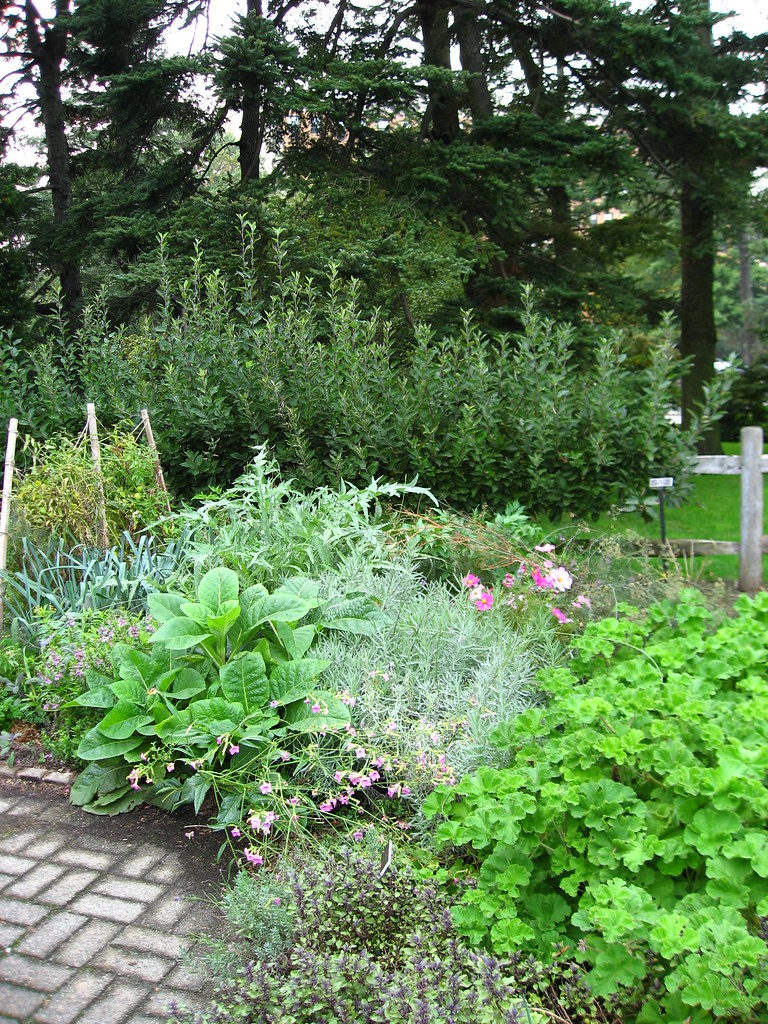Tip of the Week — 1/20/09
Posted in Gardening Tips on January 20 2009, by Sonia Uyterhoeven
Easy Design Steps for the Home Gardener
 Sonia Uyterhoeven is Gardener for Public Education at The New York Botanical Garden.
Sonia Uyterhoeven is Gardener for Public Education at The New York Botanical Garden.
 A few years ago I designed a French kitchen garden (potagér). I was under a time constraint to come up with ideas, so I fell back on some good advice that I was given at the beginning of my career. “Why do things on your own when you can always solicit the help of others?” In terms of design, the easiest way to do this is to make use of a good library. Books are full of good ideas that can be borrowed and transposed into your own creations.
A few years ago I designed a French kitchen garden (potagér). I was under a time constraint to come up with ideas, so I fell back on some good advice that I was given at the beginning of my career. “Why do things on your own when you can always solicit the help of others?” In terms of design, the easiest way to do this is to make use of a good library. Books are full of good ideas that can be borrowed and transposed into your own creations.
My initial task was to construct a framework for the garden. Raised beds provided a structure for much of the garden, but an extensive open area was up for grabs. Did I want an orderly, linear display in this area or flowing swaths of texture and color comprised of a conglomerate of herbs, flowers and vegetables?
 The answer was my typical “Let’s try a little of everything.” I found a wonderful illustration of a kitchen garden that contained tidy, linear rows that were separated in the middle with a bountiful oasis of flowers and herbs.
The answer was my typical “Let’s try a little of everything.” I found a wonderful illustration of a kitchen garden that contained tidy, linear rows that were separated in the middle with a bountiful oasis of flowers and herbs.
In the illustration an espalier of apples lined the sides of the middle expanse and acted as a transition from the linear vegetable rows to the free-flowing flowers. In my design I replaced the espaliers of apples with an espalier of tomatoes. This idea came from another book that described unusual ways to stake your tomatoes.
Once I had decided on the overall structure, the rest of the design quickly fell into place. Vegetables filled the raised beds, herbs and flowers spilled over the edges. Cute little ‘Tumbling Tom’ tomatoes spilled over the side of one bed lined by colorful ornamental peppers. With the structure in place, it was now a matter of selecting my choices from a myriad of vegetables and herbs.
Attention was paid to companion planting—potatoes joined peas in one bed, nasturtiums frolicked with tomatoes in another and rue snuggled up to a fig. Containers of sweet peas were supported by homemade teepees made from bamboo stakes. Marigolds skirted the sides in a hopeful attempt to ward off aphids.
Designing gardens, whether for vegetables or flowers, can be fun and easy. Borrowing ideas from other sources is a great way to start. Begin the process by staging your garden scene with a structure or a framework. Then carefully plug in the plants and any decorative elements.
Designs work best when you work with different layers—different heights, different shapes, different textures. To ensure that you do not end up with a cacophony of colors and textures, remember to apply the design principles of unity and repetition. A good design should form a coherent whole. Repetition of color, shapes, and textures are an easy way of creating a sense of continuity.
Winter is a wonderful time to sit down with design books and catalogs to start planning the gardening year ahead. Have fun.


Hello~
I love the way your French kitchen garden turned out. I looks beautiful!
Karrita